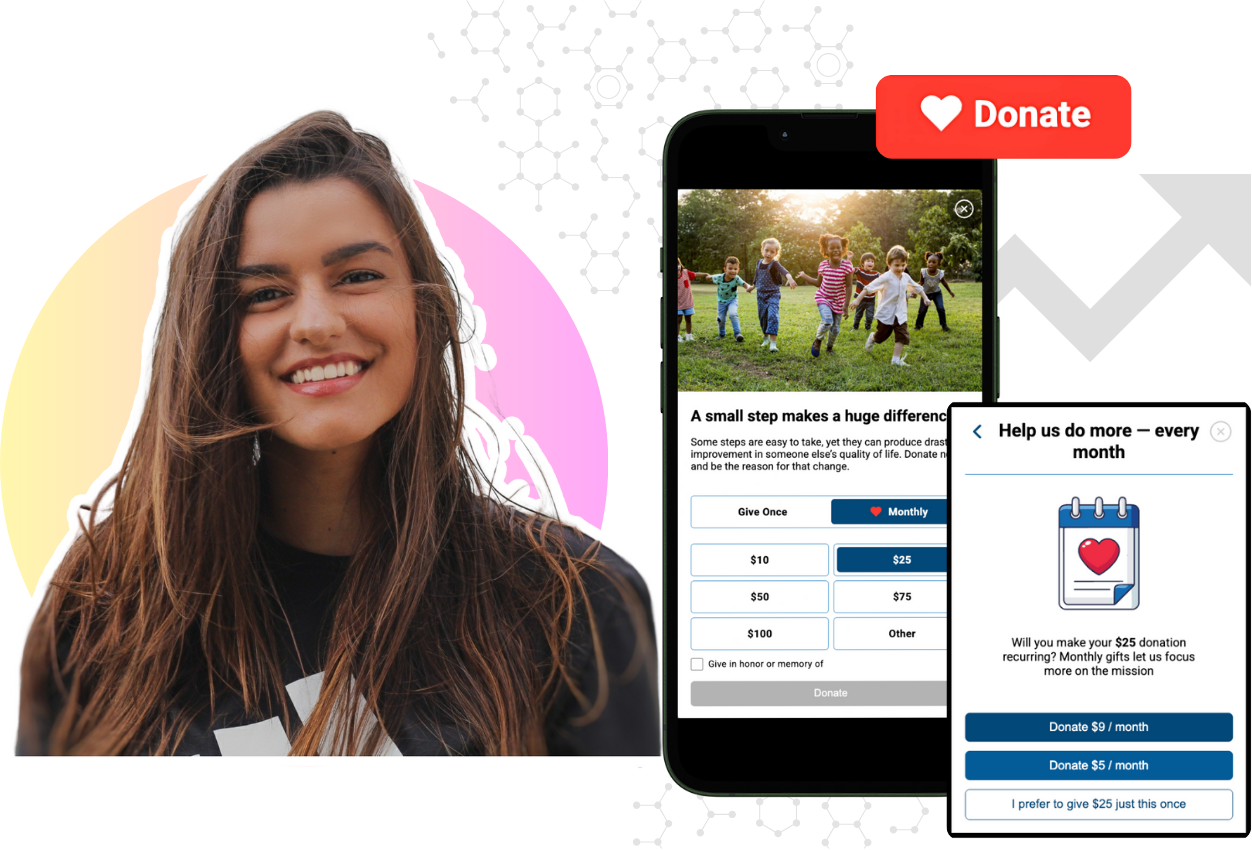What Is A/B Testing and How To Use It for Your Nonprofit's Success
You have an idea of the message you want to send out about your next campaign, but don’t know if adding a picture or video would make it better or...

Mobile-First Pop-Up Donation Form
Launch mobile-first pop-up forms in minutes, use built-in tools to capture more donations, and optimize the giving experience—no dev team required.
New to online donation pages for your nonprofit? Start here.
Donation page A/B testing - no science degree needed.
Keep your donation page loading fast - and drive higher conversions.

The 4 Types of Online Donation Experiences
89% of donors leave without giving. Learn how to use the right donation form to close the gap and boost conversions.

No one would set off on a vacation to someplace they know nothing about without first doing some research. Otherwise, they risk squandering their limited time on a completely unexpected, unwelcome experience. That seems obvious. Yet, in a manner of speaking, that is just what NPOs do when they fail to leverage existing data on their donors.
Data is fundamental in making any strategic decisions. This is especially the case when making decisions aimed at raising retention rates and fostering recurring donations. For example, at its simplest level, ignoring data for channels that potential donors are frequenting and acting on that information leaves upwards of $36 billion in potential donations untapped.
While 90% of nonprofits collect data, only 5% use data in all their decision-making. Approximately 13% of NPOs said they rarely use data, or not at all. The problem of ignoring or under-utilizing data takes on added urgency these days, with donor retention at its lowest point in three years.
At a time when it is increasingly difficult to maintain revenue, how you are using your data to reach donors has taken on more importance than ever.
At a macro level, the critical importance of putting data to work plays an important part in the stubborn, so-called “2%” conundrum NPOs have contended with for decades. With nationwide giving stalled at 2% of disposable income, breaking through that barrier calls upon NPOs to change the entrenched view of generosity as a transactional encounter to a welcome, familiar, desirable practice for donors.
Realizing change at that scale hinges on NPOs' capacities to understand their donors – their habits, relevant behaviors, and preferences. And that, of course, requires gathering, assessing, and applying data in order to personalize the donor fundraising experience in the course of executing smart, effective strategies and campaigns.
The central role of reliable data and applying it effectively is abundantly clear in what I sometimes refer to as “consumer/donor complementarity.” Silicon Valley has spent billions of dollars on conditioning consumers in terms of what they experience in a digital, online context.
Whether it’s the convenience of an Uber, the intuitive discovery process on Amazon, or the personalization we see on Netflix, as consumers, donors have become conditioned to expect a smooth, consistent experience they can readily identify and connect with. That’s why it’s so important to think of today’s donors as empowered consumers who expect the same cognitive experience when they engage with nonprofits.
Unfortunately, the vast majority of NPOs are still far from presenting donors with a complementary experience. And that consumer-donor experiential gap is only widening as technology continues racing ahead. To the extent NPOs continue to lag in the all-important job of using data-driven insights to propel a strategy of personalization, the current overall state of giving will remain stagnant.
It’s clear that the nonprofit industry has a lot of catching up to do when it comes to using data to rise to a new level of lasting relationships with donors. The good news is that the knowledge, tools, and techniques to do so are readily at hand.
iDonate’s Digital Fundraising Platform (DFP) was created explicitly to equip nonprofits with everything they need to maximize the untapped value in their data to drive innovation. Our DFP can enable you to establish deep roots with recurring donors, accelerate conversion rates, and occupy a secure, sustainable place in their lives. I invite you to visit iDonate to learn more.

You have an idea of the message you want to send out about your next campaign, but don’t know if adding a picture or video would make it better or...

For any business or individual that gets into investments, one piece of advice is to diversify your funds.

If you’re thinking about applying for a grant for your nonprofit, learning about which type of grant is the right one is a big step.